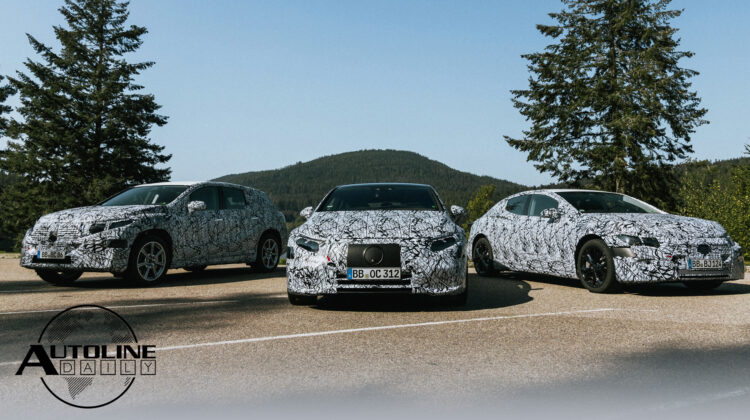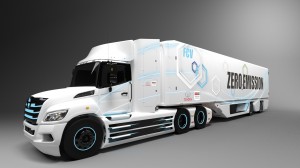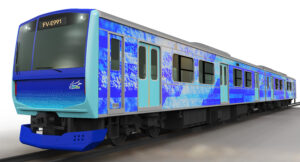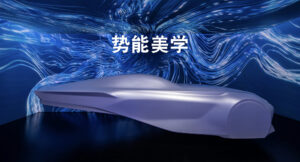
Listen to “AD #2932 – BorgWarner Finalizes Deal for Delphi; Mercedes Ramps Up EV Efforts; Why Honda Dropped F1 Not IndyCar” on Spreaker.
Follow us on social media:
Runtime: 9:34
0:23 BorgWarner Finalizes Deal for Delphi
2:32 Another Reverse Merger
2:58 Mercedes to Slash Costs
5:22 Why Honda Dropped F1 Not IndyCar
6:08 Toyota Making Fuel Cell Semi for North America
6:31 Toyota Working on Fuel Cell Train
7:28 Ford Shows Its Hybrid F-150 is Tough
8:35 Ford to Open Design Center in China
Visit our sponsors to thank them for their support of Autoline Daily: Bridgestone, BorgWarner and Intrepid Control Systems.
This is Autoline Daily, the show dedicated to enthusiasts of the global automotive industry.
BORGWARNER FINALIZES DEAL FOR DELPHI
Yesterday BorgWarner closed the deal on its acquisition of Delphi. That adds about $4 billion in revenue to Borg-Warner, making it a $14 billion supplier. It also sets up BorgWarner to do complete turn-key systems for battery electric vehicles. Fred Lissalde, the president and CEO of BorgWarner, told Autoline what they’re now capable of.
Fred Lissalde, President & CEO, BorgWarner
“With Delphi we’re creating a BorgWarner that not only has downstream from the battery the winning equation–which is mechanical, plus power, plus motor, equals the system. But John, we have all the products from stationary charging to moving the wheels of a battery electric vehicle or a hybrid vehicle. From stationary charging, to on-board charging, to battery packs ,to battery management system, barry cooling, inverter, motor, transmission, DC-DC converter. Efficiency in the battery electric vehicle is going to be extremely important. We’re not going to talk about fuel efficiency, we’re going to talk about efficiency. With efficiency comes range or cost. And also with efficiency the electrons we use for moving the wheels of the vehicle can be used for other trends like connected or autonomous driving. And we’re going to be one of the only guys in the world that can fine tune this efficiency–the mechanical efficiency, together with the motor efficiency, together with the software efficiency–all those connections, making sure we have the right package. That we’re optimizing all the right design features. Because we have that all under one roof.”
That’s pretty impressive. Not many suppliers have the ability to do complete turn-key BEV systems. In fact, we’re not sure than anyone else has such a complete portfolio.
ANOTHER COMPANY GOING PUBLIC THROUGH REVERSE MERGER
By the way, BorgWarner also owns 20% of Romeo Systems, a battery startup located near Los Angeles, which claims to have the highest energy density of any battery. It plans to go public through a reverse merger and hopes to raise about $384 million. Romeo makes batteries for heavy trucks and commercial vehicles and does all it’s manufacturing in the US.
MERCEDES TO SLASH COSTS
Mercedes says its break-even point before turning a profit is too high and so it needs to cut costs. It’s going to slash fixed costs and R&D by more than 20% by 2025. We wonder if that puts its Formula 1 efforts in jeopardy? For the short-term, AMG’s links to F1 will be ramped up next year – not sure exactly what that entails – and specialists from the race team will be used for the company’s Vision EQXX technology program that looks to bring the development of eMotors in-house. And Mercedes is really ramping up its electrification efforts. The G-Class and the AMG and Maybach brands will be going electric. The EQS sedan, which comes next year, will be followed by the EQE sedan, EQE SUV and EQS SUV. Those are all built on the automaker’s large dedicated EV platform. In 2025 a smaller dedicated EV platform will launch that will be for small and medium-sized cars. Also expect to see more Maybach variants in the future. Mercedes will try and double the size of the brand. With these moves, Mercedes says by 2025 it will be able to turn a profit, even with unfavorable market conditions.
WHY HONDA DROPPED F1 AND NOT INDY
Honda, as you know, announced it’s going to pull out of Formula One at the end of next year. But it’s going to continue making engines for Indycar. So why Indy and not F1? Here’s our Autoline Insight. Honda’s Formula One activities are run by an operation called Honda HRD. It is funded directly out of Honda’s R&D budget. Meanwhile, the Indycar activities are run by Honda HPD, which is a subsidiary with its own P&L responsibilities. It makes money selling high performance parts and Indycar engines. By getting rid of its F1 efforts, Honda will free up a lot of R&D money, whereas dropping out of Indycar wouldn’t save it anything.
Join us this Thursday when we take a deep dive into the development of the new Acura TLX. We’ll have the team leader Ken Sheridan and the chief engineer Marc Ernst on Autoline After Hours, the only show where you can consistently learn how the auto industry develops new products. Frank Markus will also be on the show so join John and Gary when we go live this Thursday afternoon at 3 pm eastern time.
TOYOTA ANNOUNCES FUEL CELL SEMI FOR NORTH AMERICA
Shifting over to the commercial truck segment, Toyota and its big truck subsidiary, Hino, announced plans to jointly develop a Class 8 fuel cell semi-truck for the North American market. It will be based on the Hino XL Series and equipped with Toyota’s fuel cell technology. The companies expect to have a demonstration vehicle ready in the first half of 2021.
TOYOTA TO TEST FUEL CELL TRAIN
And speaking of Toyota and fuel cells, it’s partnered with Hitachi and Japanese railway company, JR East, to develop a rail car powered by a hybrid fuel cell system. Here’s how it works. Electricity generated from the fuel cell is used to charge the main storage battery, which also gets energy through regenerative braking. The hybrid system then supplies that electricity to the traction motors from both the fuel cell and the main storage battery and that’s what turns the wheels. The companies plan to test the rail car in the real world in March of 2022.
FORD SHOWS ITS HYBRID F-150 IS TOUGH
The new F-150 goes on sale soon and for the first time it will be offered with a full hybrid powertrain. And the folks over at Ford want you to know that the hybrid is as rough and tough as any F-150 out there. It put out this video of the hybrid going through torture tests that all F-150’s endure, including towing in the desert in 100 plus degree weather, driving over harsh terrain and poor roads. The company also built a special testing machine to violently shake the 1.5 kWh lithium-ion battery equipped in the truck, to simulate hitting potholes and driving over bad roads. Ford says 82 hours on the machine is the equivalent of 10 years of punishment. The hybrid F-150 is powered by a 3.5L engine that cranks out 430 horsepower, 570 lb-ft of torque and it’s able to tow up to 12,700 pounds. It’s the most powerful powertrain in the new F-150 lineup and it has the most torque of any F-150 ever.
FORD TO OPEN DESIGN CENTER IN CHINA
Speaking of Ford, the automaker has struggled to connect with buyers in China. So, to help with that Ford is opening a new Design Center in the country this month and will hire Chinese designers to launch vehicles with its new design language, called “Progressive Energy In Strength.” While we don’t think there’s much to glean from it, Ford says this speed form it has on display at the Beijing auto show helps to showcase that future look. The press release talks about this cool sounding parametric octagon scales graphic design in the grille, but foolishly, Ford didn’t show it. Guess we’ll have to wait.
But that wraps up today’s show. Thanks for watching.
Thanks to our partner for embedding Autoline Daily on its website: WardsAuto.com

John McElroy is an influential thought leader in the automotive industry. He is a journalist, lecturer, commentator and entrepreneur. He created “Autoline Daily,” the first industry webcast of industry news and analysis.









